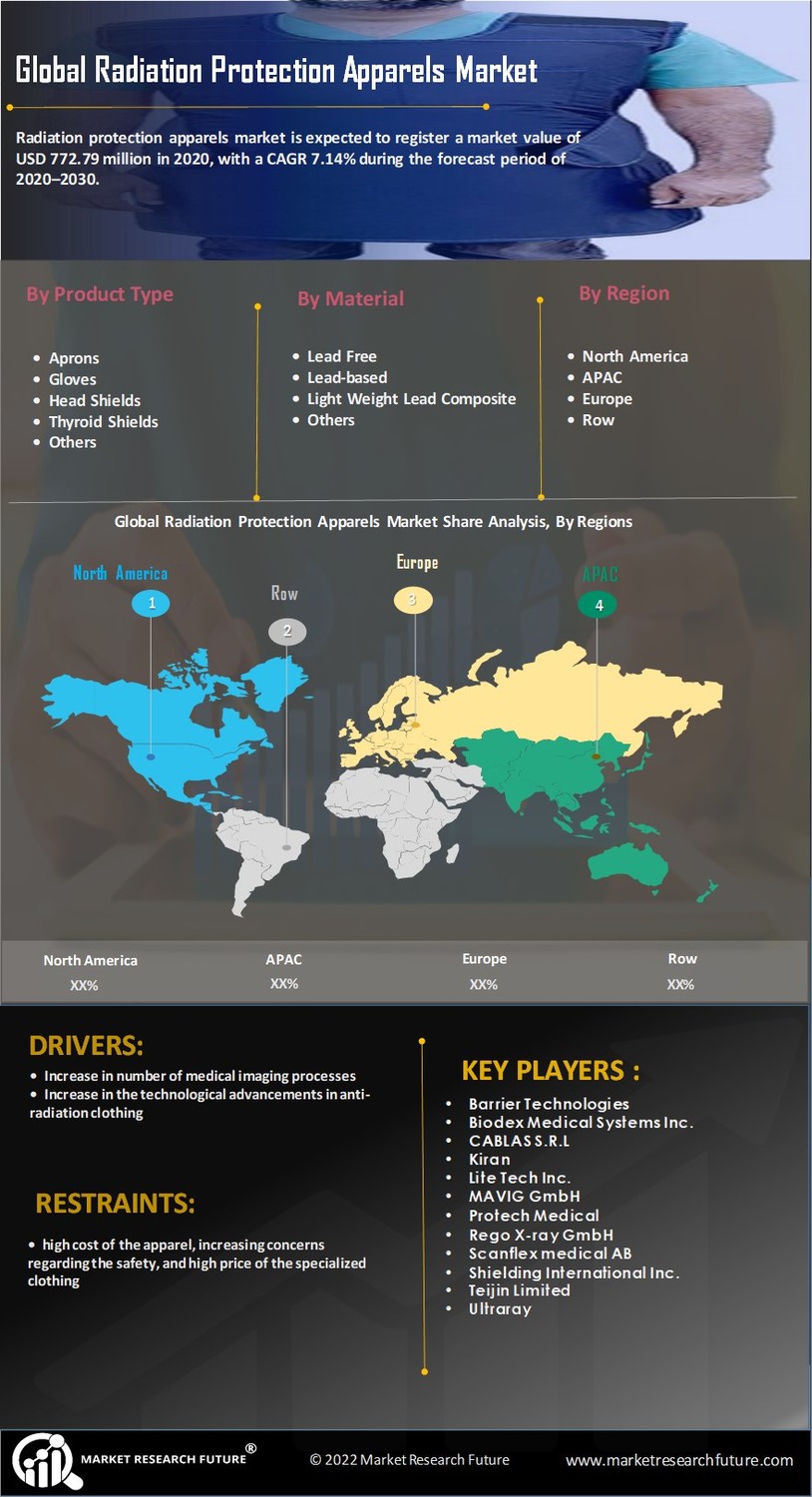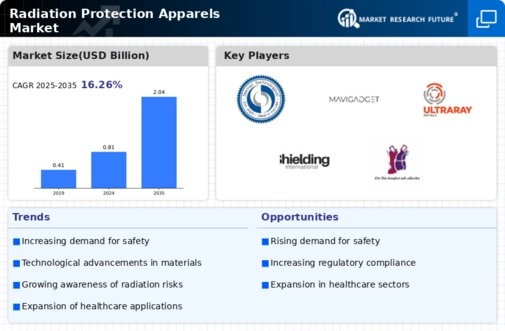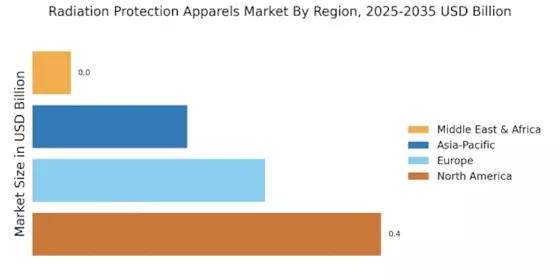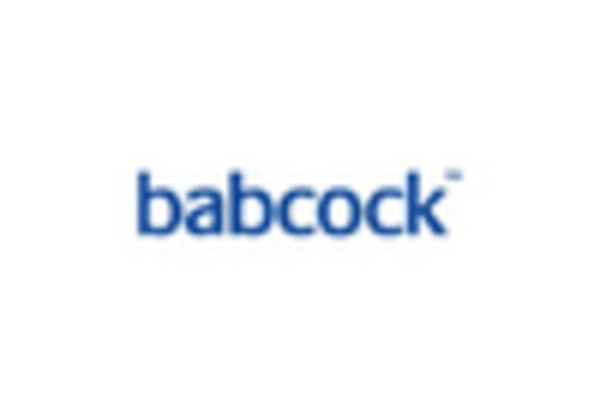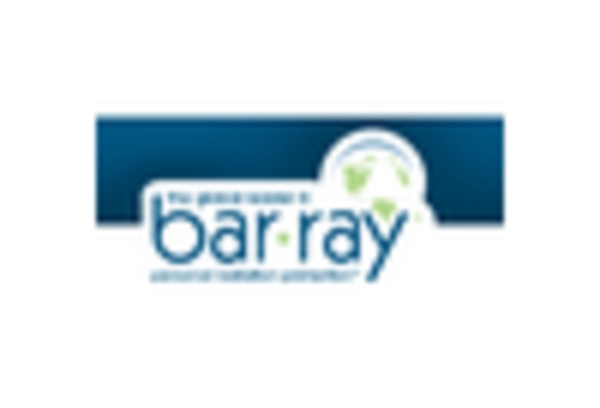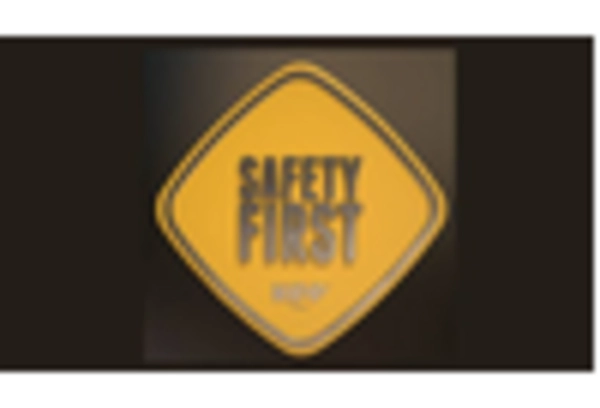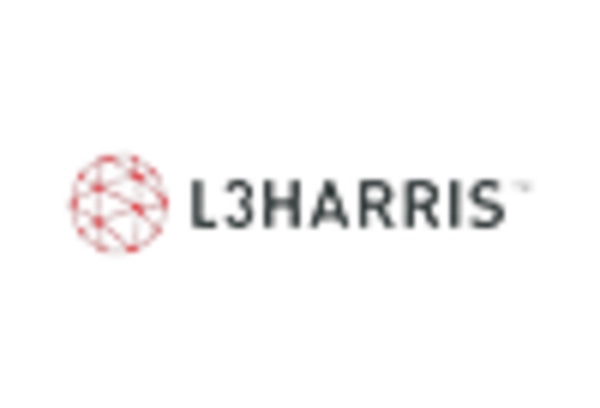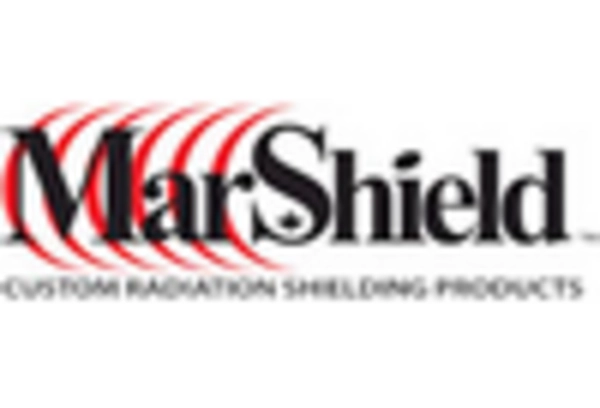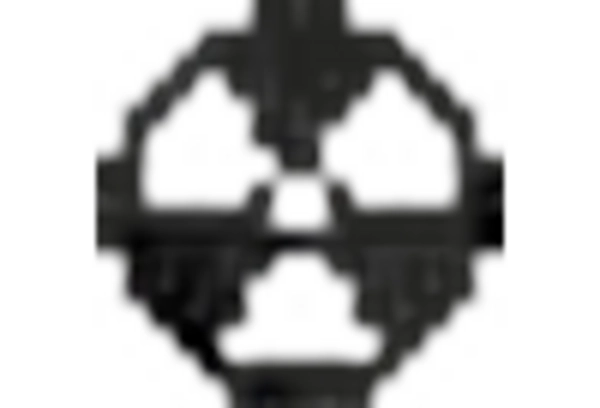Growth of the Healthcare Sector
The overall growth of the healthcare sector is a fundamental driver for the Radiation Protection Apparels Market. As healthcare facilities expand and new technologies are adopted, the need for radiation protection apparel becomes increasingly pronounced. The expansion of hospitals, clinics, and diagnostic centers contributes to a higher volume of procedures that involve radiation exposure. Consequently, the demand for protective apparel is likely to increase as healthcare providers prioritize the safety of their staff and patients. Market analysts predict that the healthcare sector's growth will continue to fuel the demand for radiation protection garments, thereby enhancing the market's prospects in the foreseeable future.
Regulatory Standards and Compliance
Regulatory standards play a crucial role in shaping the Radiation Protection Apparels Market. Governments and health organizations have established stringent guidelines to ensure the safety of medical personnel and patients during procedures involving radiation. Compliance with these regulations necessitates the use of appropriate protective apparel, which in turn drives market growth. The enforcement of these standards has led to an increase in demand for certified radiation protection garments, as healthcare facilities seek to mitigate legal liabilities and enhance safety measures. The market is expected to witness a steady increase in demand as compliance becomes more stringent across various regions.
Increasing Awareness of Radiation Risks
The growing awareness of radiation exposure risks among healthcare professionals and patients is a pivotal driver for the Radiation Protection Apparels Market. As medical imaging technologies advance, the potential for radiation exposure increases, prompting a heightened focus on protective measures. This awareness is reflected in the rising demand for protective apparel, as institutions prioritize safety protocols. According to recent data, the market for radiation protection apparel is projected to grow at a compound annual growth rate of approximately 5.2% over the next few years. This trend indicates a shift towards prioritizing safety in medical environments, thereby bolstering the market for radiation protection apparel.
Technological Innovations in Fabrication
Technological innovations in the fabrication of radiation protection materials are significantly influencing the Radiation Protection Apparels Market. Advances in textile technology have led to the development of lighter, more flexible, and effective protective garments. These innovations not only enhance comfort for users but also improve the overall efficacy of radiation shielding. The introduction of new materials, such as lead-free composites, is gaining traction, appealing to environmentally conscious consumers and institutions. As a result, the market is likely to experience a surge in demand for these advanced protective apparel options, reflecting a broader trend towards sustainable practices in healthcare.
Rising Incidence of Cancer and Diagnostic Imaging
The rising incidence of cancer and the increasing reliance on diagnostic imaging techniques are driving the Radiation Protection Apparels Market. As the prevalence of cancer continues to escalate, the demand for imaging procedures, such as X-rays and CT scans, has surged. This trend necessitates the use of effective radiation protection apparel to safeguard both patients and healthcare workers. Market data suggests that the demand for radiation protection garments is expected to rise in tandem with the growth of the diagnostic imaging market, which is projected to expand significantly in the coming years. This correlation underscores the critical role of protective apparel in modern healthcare.
